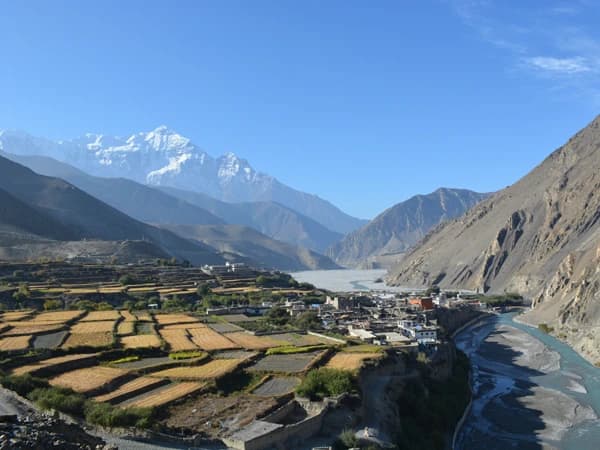Geographical Diversity
Based on the geological structure, Nepal can be separated predominantly into three locales: The Himalayan region, the Middle Hills, and the Terai (plain land). The highest point of Nepal is the summit of Mt. Everest (8,848 m) that is 60 m above the sea level. The climatic conditions vary from subtropical to the solidifying.
The Himalayan region covers 16% of the total land of Nepal. It is the least populated region because of the isolation and harsh cold climate of this region. Sherpas are the main ethnic groups that reside in this region.
Whereas, the Hilly region is spread in 65% of all outland. It is more populated in comparison to the Himalayan region and has around 44% of the total population of Nepal. For the most part Gurung, Magar, Newar, Brahmin, and Chhetri reside in this region. This region also includes several timberlands, terraced fields, and protected areas. This area is prominent for saving the jeopardized species like red panda, panther, bear and a few types of birds.
Likewise, the Terai region is secured by plain grounds and thick forests. It covers 49% of all total area of Nepal, which includes several big and small industries of Nepal. Terai is the most populated region in Nepal.
People in different Regions (Terai, Hilly, and Mountains)
The vast diversity in the geography of Nepal had made different people reside in different regions who have a completely unique lifestyle, tradition, and culture from one another. This has made Nepal rich in culture and tradition. Moreover, every community has their own dialect that had made uncountable number on languages that people speaks here in Nepal.
The general population from various generalizations, meet up, presents explorer one of a kind mixture of societies. These individuals have figured out how to incorporate both Hinduism and Buddhism to such an uncommon point that their way of life has formed into a special one.
The northern locale of high Himalayas, the Sherpas, Dolpas, Lopas, Baragaonlis, Manangis live in various villages scattered along the Himalayan region. The Sherpas are basically limited in the east in the Solu and Khumbu district. The Baragaonlis and the Lopas live in the semi-abandoned region of the upper and lower Mustang in the piece of the Tibetan land in the rain shadow zone, the Manangis in the Manang region and the adjacent regions; and the Dolpas in the most elevated settlements on the earth in the Dolpo region ( in the west of Nepal) at a height of over 4000 m.
Whereas the Middle Hills is home of the wars,Magars, Gurungs, Tamangs, Sunuwars, Ne Thakalis, Chepangs and the greater part of Brahmins and Chhetris. The Brahmans and Chhetris have long strength in all plaguing social, religious and political domains.
Similarly in Terai is home of Tharus, Darai, Kumhal, Majhi, Chhetris, Newar and others. The prolific plain of Terai, by and large, known as "storehouse of Nepal" has incredible rural esteem. The greater part of the occupants lives on agribusiness.
Taking everything into account, Nepal is a wonderful Himalayan, south Asian, landlocked nation. Individuals of various races, ranks, religions, societies are possessed together in a tranquil domain of Nepal. In view of assorted variety in living styles individuals still, have their very own customary routes for the nourishment and wearing garments. In any case, Daal, Bhat, and Tarkari is the most normally eaten food in all parts of Nepal.
It doesn't matter you are traveling to which part of Nepal, people residing here are the most generous and kind-hearted. You will be welcomed in every part of Nepal. People in Nepal are always ready to help each other and the specially foreigners. Don't feel shy and interact with the locals whenever possible this will surely make your trip even more wonderful.






